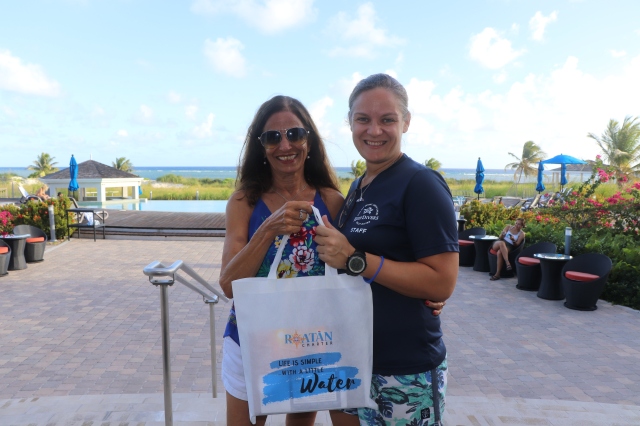 Dive Industry Network
Dive Industry Network
SWAG Gift Bags for FAM Participants
By Gene Muchanski, Executive Director,
Dive Industry Association, Inc.
SWAG Gift Bags for Travel Advisors
A SWAG Gift Bag is a promotional item that is handed out to attendees at an event. While they are considered a singular promotional item, swag gift bags are in fact a bag of multiple items that attendees genuinely appreciate. The number of items in a swag gift bag depends on the number of sponsors that participate in the giveaway. The promotional items included may differ depending on the type of event being conducted. The items could be sample size products or full production sized. They are given as a gift to attendees by event producers, to express appreciation for attending an event.
Swag Gift Bags are effective attention getters at shows and events because they start the program off on a positive note. Think of it this way. An attendee arrives an event, having spent considerable time, money, and manpower getting there. They are greeted by the producers who present them with a gift, thanking them for attending. If the swag gift bag contains items of value, it’s a double win for the attendee, producer, and sponsor.
Swag Gift Bags gets their name from the word sway, and not from the words to an acronym you might be thinking of. By presenting attendees with a gift upon arrival, producers are trying to sway us, or persuade us to think of them favorably. In the travel industry, swag gift bags are used extensively, because the producers of travel events are doing their best to get our business. And it works.
As a Marketing Professional, I have seen the effective use of swag bags when dealing with buyers and sellers in a variety of industries. Especially in the travel and hospitality industries. I learned very early in my career that the sellers of programs, products, and services, are always looking for customers who need, want, can afford, and are willing to purchase what they sell. I also realized that the person with the checkbook always has a competitive edge in a buyer–seller relationship. I’ve made it my mission to bring buyers and sellers in the diving industry together for mutual benefit, by using innovative marketing ideas like swag gift bags and personal matchmaking referrals.
Swag Bag Use on FAM Trips: Providing FAM trip attendees with a bag of useful product samples accomplishes a number of objectives for the event planner, the recipient, and the sponsor.
- Trip Planners establish goodwill with attendees, resorts, and dive operations
- Product samples may be useful on the trip
- Vendors/Sponsors may receive new customers/dealers
- Travel/Equipment Buyers may discover new products or vendors
- Product samples may be tax deductible donations or a promotional expense
Who Receives Swag Bag: Swag Gift Bags are given to qualified retail buyers on a FAM trip as a means to introduce them to new products. On trips where dive stores are permitted to bring two attendees, each one should receive a bag of their own. Trip Planners may get a little creative when couples are involved, if samples are different in color, size, or purpose. It may also make a difference if the guests are divers or non-divers. The key is to be creative but remain inclusive. I also found it appropriate to give a special swag gift bag to the Resort Manager and the Manager of the Diving Operation. Preferably the ones who are in charge of product purchasing.
Popular Swag Bag Items: Popular swag items on dive trips include reusable water bottles, environmentally safe sunscreen, insect repellent, lip balm, sunglasses, ball caps, rash guards and beach towels. Specialty diving accessories make great gift items also, depending on their size, cost, and usage.
Typical Swag gift Bag Sponsors: Any company with a vested interest in diving and dive travel can and should participate in swag gift bag promotions. We’ve seen sponsorships from tourism boards, dive resorts, dive travel wholesalers, dive equipment manufacturers, non-profit organizations, and lifestyle product companies.
Benefits of Swag Gift Bag Promotion: Right before the pandemic and shortly after, Roatan Charter and the Dive Industry Association worked together on two FAM Trips to Belize and the Turks & Caicos Islands. We came up with the idea of presenting our participants with a swag gift bag at the beginning of each trip. We did it for a number of reasons. Primarily, dive travelers need certain items while on a dive trip in the Caribbean. Essential items like sunscreen, insect repellent, sunglasses, ball caps, towels, and water bottles, are important items to bring for your safety and enjoyment. We explained to our sponsors that we would be traveling with up to 35 qualified retail buyers for a weeklong trip to the Caribbean. In addition, we would be spending quality time with the buyers from the Dive Resort and Dive Operation. When you consider how expensive it is to hire sales representatives to cover the Caribbean, having a captive audience with us for a week seemed like a winning proposition to a number of sponsors. Creating a SWAG Gift Bag for our FAM Trip participants was an enjoyable challenge for us, and our efforts were well received by our participants, as well as by the resort and dive operation managers. All the sample products we distributed were used on location and contributed to an enjoyable event. It may have even led to a few new dealers for the sponsors and a few new vendors for the dive store retailers.
More Than Just Travel Buyers: When you think about what we are doing by conducting FAM trips, you see that we are in fact, bringing buyers and sellers together. Normally you would think that a FAM trip is about introducing 35 travel buyers to 2 travel sellers: the dive travel wholesaler and the dive resort. But it is not just about travel buyers and sellers. On a typical FAM Trip, we will be spending a week with as many as 35 qualified retail buyers of diving equipment, training, travel, and lifestyle products. When you add the buyers from the resort’s gift shop and the dive operation, you have a five-day event in which to build relationships with almost 40 buyers.
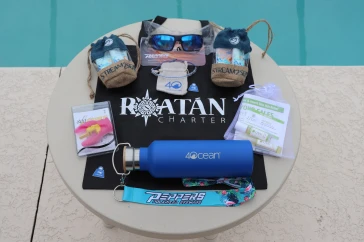 Belize FAM Trip: Right before the pandemic, we had the opportunity to work with Roatan Charter on a FAM Trip to Belize. Roatan Charter and Belize Dive Haven had scheduled a FAM Trip 2 weeks prior to their Grand Opening. Our goal was to select up to 30 participants from our databases of high-volume group travel buyers for this inaugural FAM Trip. While Debbie Helms from Roatan Charter was finalizing the details for the trip, we were putting out a request to the diving industry for FAM Trip sample products for our SWAG Gift Bags. The response was better than we had anticipated. The following Vendors donated 30 sample products each. Thank you all for your generous participation.
Belize FAM Trip: Right before the pandemic, we had the opportunity to work with Roatan Charter on a FAM Trip to Belize. Roatan Charter and Belize Dive Haven had scheduled a FAM Trip 2 weeks prior to their Grand Opening. Our goal was to select up to 30 participants from our databases of high-volume group travel buyers for this inaugural FAM Trip. While Debbie Helms from Roatan Charter was finalizing the details for the trip, we were putting out a request to the diving industry for FAM Trip sample products for our SWAG Gift Bags. The response was better than we had anticipated. The following Vendors donated 30 sample products each. Thank you all for your generous participation.
- 4Ocean – Reuseable Water Bottle & Wrist Bracelet
- Lita’s All Natural – Insect Repellant
- Pepper’s Polarized Eyewear – Sunglasses & Lanyards
- SeaCure Custom Mouthpiece – SeaCure Custom Mouthpiece, 4 colors
- Stream2Sea – 3 Piece Sampler Pack- Sunscreen, Conditioner, Sun & Sting Gel
We ended up with 28 FAM participants. We presented 28 SWAG Gift Bags at our arrival dinner at the resort, to qualified buyers from 14 Dive Stores, 1 Dive Travel Wholesaler, 1 Industry Media, and the Resort Owner and Dive Operations Manager. All of the products we distributed got excellent usage on the trip. The water bottles were refilled multiple times per day, and we carried them everywhere.
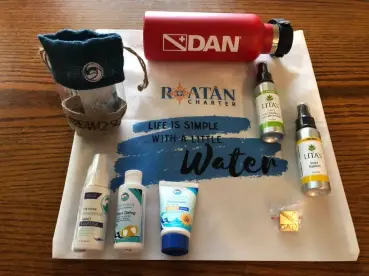 Turks & Caicos Islands FAM Trip: We had such a good experience with the gift bags in Belize, that we ran the program again on South Caicos Island, in the Turks & Caicos Islands. We would like to thank DAN for the water bottles and Gold DAN Pins. They went with us everywhere. Thanks to Stream2Sea for the 3 Sample Pack of Sunscreen, Hand Sanitizer, and Mask Defog. The perfect post-pandemic products. Thank you to Lita’s All Natural for the Insect Repellent and Insect Bite Itch Relief. You never know how much you need them until you need them.
Turks & Caicos Islands FAM Trip: We had such a good experience with the gift bags in Belize, that we ran the program again on South Caicos Island, in the Turks & Caicos Islands. We would like to thank DAN for the water bottles and Gold DAN Pins. They went with us everywhere. Thanks to Stream2Sea for the 3 Sample Pack of Sunscreen, Hand Sanitizer, and Mask Defog. The perfect post-pandemic products. Thank you to Lita’s All Natural for the Insect Repellent and Insect Bite Itch Relief. You never know how much you need them until you need them.
- DAN – Divers Alert Network – Reuseable Water Bottle DAN & DAN Pin
- Lita’s All Natural – Insect Repellant & Insect Bite Itch Relief
- Stream2Sea – 3 Piece Sampler Pack- Sunscreen, Essentials Hand Sanitizer, & Mask Defog
What We Learned: The first thing I realized was that Debbie Helms from Roatan Charter is a Rock Star. I always knew it, but these two trips showed us all why Roatan Charter is the best Dive Travel Wholesale Company in the Industry. Debbie and her Staff are always open to new ideas, and they go out of their way to enhance their clients’ dive travel experience. Our experience with the SWAG Gift Bags enabled us to form a closer bond with our Retail FAM Trip Participants and it led to a partnership with a number of dive equipment suppliers and manufacturers. FAM Trip visits can double as an opportunity to present and demonstrate diving equipment and related products to qualified retail buyers who are participating in the FAM Trip, as well as to the equipment buyers at the dive resort, dive operation, and resort gift shop.
A Paradigm Shift in FAM Trips: From a marketing perspective, I am always thinking about ways to increase the frequency, reach, and effectiveness of our marketing messages, increase market penetration and market share, maximize the flow of goods and services through our channels of distribution, and continually acquire, retain, and service my current customer base. I sincerely believe that an integrated marketing strategy, like the one we are currently using, can make significant inroads in the Caribbean dive market. I am looking forward to expanding our marketing influence in the Caribbean and beyond.
For more information on raising the professional bar in the Global Diving Business Network, contact Gene Muchanski, Executive Director, Dive Industry Association, Inc., 2294 Botanica Circle, West Melbourne, FL. Phone 321-914-3778. Email: gene@diveindustry.net web: www.diveindustry.net
# # #

 Success Is When A Plan Comes Together
Success Is When A Plan Comes Together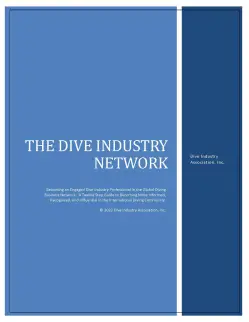 One of my esteemed colleagues in the industry suggested that I should expand the topic into a full-length book. He must have been reading my mind. That is exactly what we have been planning to do for some time now. If you have been reading our Newsletter, which is now a Magazine, for the past 23 years, you’ll know that most of our articles are actually chapters or sections of a bigger issue. Creating Your Own Circle of Influence is part of an expanded version of the original twelve chapters first published in the series, The Dive Industry Network. The series focused on how Dive Industry Professionals could learn, participate, lead, and mentor important principles in the diving industry. Maybe we will call the next series of articles, Section II. In addition to creating a circle of influence, we’ll be showing Dive Industry Professionals how to work with Dive Travel Wholesalers, qualify for FAM Trips, and learn how to set up group travel dive trips, among other things. There are so many things a Dive Professional can do to launch their career and give them a competitive edge; we could write a book about it. Dah!
One of my esteemed colleagues in the industry suggested that I should expand the topic into a full-length book. He must have been reading my mind. That is exactly what we have been planning to do for some time now. If you have been reading our Newsletter, which is now a Magazine, for the past 23 years, you’ll know that most of our articles are actually chapters or sections of a bigger issue. Creating Your Own Circle of Influence is part of an expanded version of the original twelve chapters first published in the series, The Dive Industry Network. The series focused on how Dive Industry Professionals could learn, participate, lead, and mentor important principles in the diving industry. Maybe we will call the next series of articles, Section II. In addition to creating a circle of influence, we’ll be showing Dive Industry Professionals how to work with Dive Travel Wholesalers, qualify for FAM Trips, and learn how to set up group travel dive trips, among other things. There are so many things a Dive Professional can do to launch their career and give them a competitive edge; we could write a book about it. Dah!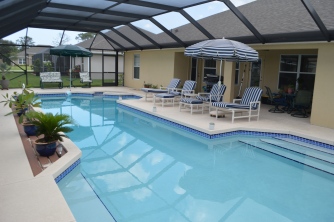 Seeing a start-up go through the process of business planning from start to finish is a rewarding experience. It is like witnessing a product go through the transformation from conception to consumption. It’s exciting. From my own experience, the most dramatic example of seeing a vision come to life through a successful planning process happened when we had a swimming pool built. Having never built a pool before, we hired a professional pool builder to do the job. Based on his many years of experience in the pool building trade, he helped us design the pool we needed, wanted, and could afford. The builder returned to us a few days later and presented us with a drawing of our pool, explained how and when it was going to be built, and told us what it would cost. From the day we broke ground until the day we added water to our pool, I photographed and videotaped the entire process and shared the progress with our diving friends and colleagues on social media. I have to admit, there were days when I wondered if we were ever going to get the pool we wanted, on time, and on budget. You might say that I had my doubts at times. But through the entire process, the pool builder reassured us that according to his plan, everything was going like clockwork. You have to understand that the builder could see the finished product in his mind’s eye, from the very first day he broke ground. It wasn’t his first rodeo! The pool was indeed finished on time, on budget, and functioned just like the builder said it would.
Seeing a start-up go through the process of business planning from start to finish is a rewarding experience. It is like witnessing a product go through the transformation from conception to consumption. It’s exciting. From my own experience, the most dramatic example of seeing a vision come to life through a successful planning process happened when we had a swimming pool built. Having never built a pool before, we hired a professional pool builder to do the job. Based on his many years of experience in the pool building trade, he helped us design the pool we needed, wanted, and could afford. The builder returned to us a few days later and presented us with a drawing of our pool, explained how and when it was going to be built, and told us what it would cost. From the day we broke ground until the day we added water to our pool, I photographed and videotaped the entire process and shared the progress with our diving friends and colleagues on social media. I have to admit, there were days when I wondered if we were ever going to get the pool we wanted, on time, and on budget. You might say that I had my doubts at times. But through the entire process, the pool builder reassured us that according to his plan, everything was going like clockwork. You have to understand that the builder could see the finished product in his mind’s eye, from the very first day he broke ground. It wasn’t his first rodeo! The pool was indeed finished on time, on budget, and functioned just like the builder said it would. An Industry in Search of Meaning
An Industry in Search of Meaning It’s Time for Spring Cleaning
It’s Time for Spring Cleaning The Power of Strategic Thinking
The Power of Strategic Thinking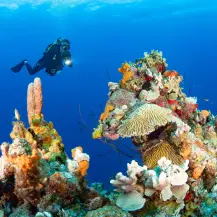 NEW – Sail, Dive & Dine with Buddy Dive Resort Bonaire and Epic Tours!
NEW – Sail, Dive & Dine with Buddy Dive Resort Bonaire and Epic Tours!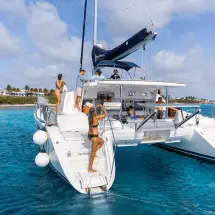
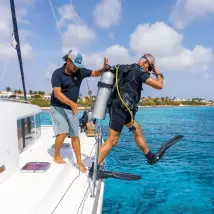


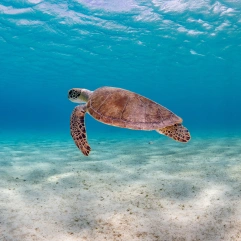 During the 8-hour Sail, Dive & Dine tour – from 11 am – 7 pm – Guests will make two guided dives in the Marine Park of Bonaire and Klein Bonaire. After the first dive, lunch and drinks are served (remember, no alcoholic drinks before dives). We will smoothly sail toward the next dive spot while guests gear up for the second guided dive. After the second dive, the boat will moor on a beautiful, sheltered spot for ice-cold drinks and downtime on board the catamaran while the crew prepares dinner. The day will end with a 4-course dinner and drinks during one of Bonaire’s famous sunsets. This is the perfect tour for divers, but there are also spots available for the non-divers! During the dives, they can enjoy guided snorkeling.
During the 8-hour Sail, Dive & Dine tour – from 11 am – 7 pm – Guests will make two guided dives in the Marine Park of Bonaire and Klein Bonaire. After the first dive, lunch and drinks are served (remember, no alcoholic drinks before dives). We will smoothly sail toward the next dive spot while guests gear up for the second guided dive. After the second dive, the boat will moor on a beautiful, sheltered spot for ice-cold drinks and downtime on board the catamaran while the crew prepares dinner. The day will end with a 4-course dinner and drinks during one of Bonaire’s famous sunsets. This is the perfect tour for divers, but there are also spots available for the non-divers! During the dives, they can enjoy guided snorkeling.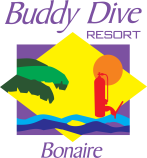 About Buddy Dive Resort
About Buddy Dive Resort Maximize Your Trade Show Experience
Maximize Your Trade Show Experience Dear DEMA Show Attendee:
Dear DEMA Show Attendee: FOR IMMEDIATE RELEASE
FOR IMMEDIATE RELEASE Why Marketing Professionals Use Target Marketing
Why Marketing Professionals Use Target Marketing